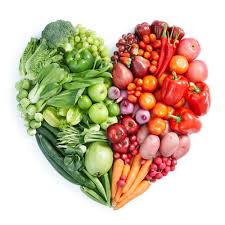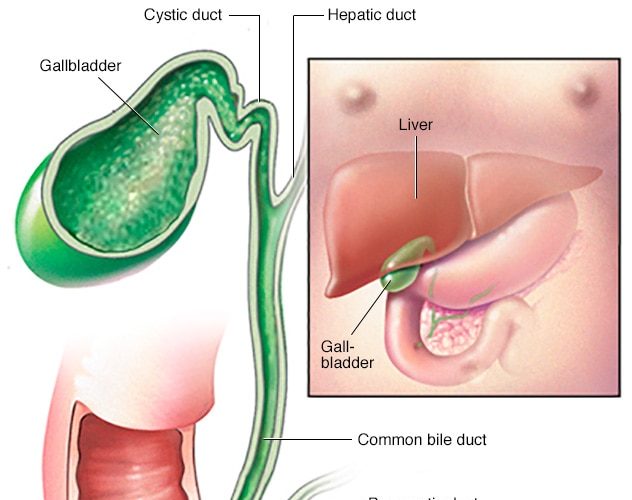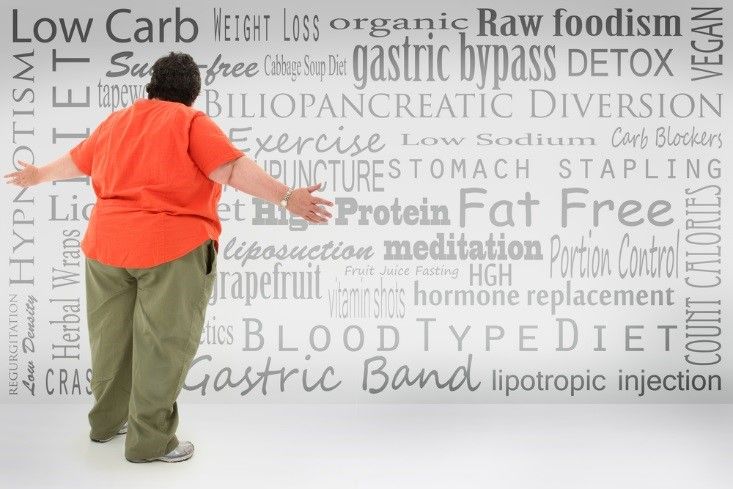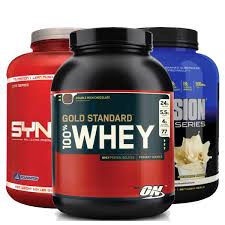Prince
Healthy Eating Starts With A Healthy Breakfast.
Investing in a healthy breakfast would reduce the global burned of diabetes and save billions in lost productivity and health-care costs. A healthy Breakfast decreases the risk of developing type 2 diabetes. Food which reduce the risk of type 2 diabetes such as vegetables, fresh fruits, whole grains and unsaturated fats need to be available and cheap, energy dense foods shunned for breakfast. Skipping breakfast also is associated with weight gain!
Individuals can reduce the risk of type 2 diabetes by:
1.) Choosing water or unsweetened coffee or tea instead of fruit juice, soda and other sugar sweetened beverages.
2.) Eating at least three servings of vegetables everyday including green leafy vegetables.
3.) Choosing nuts, a piece of fresh fruit or sugar-free yoghurt for snacks.
4.) Limiting alcohol intake to two standard drinks per day.
Choosing lean cuts of white meat, poultry and seafood instead of processed meat or red meat.
5.) Choosing peanut butter instead of butter or chocolate spread or jam for bread.
(6). You can choose from a variety of brown or white rice, whole grain or wheat, wheat or white bread. Your portion size matters a lot and bulking with vegetables would help reduce incidence of glucose spike.
7.) Choosing unsaturated fats (olive oil, canola oil, corn oil or sunflower oil) instead of saturated fat ( animal fat, palm oil, ghee, butter or coconut oil).
These recommendations will also help someone with diabetes to achieve stable control.
A lot of people question the connection between mental health and diet. The truth is that your brain (the powerhouse of the mind) and your lifestyle, diet inclusive, are inseparable! From the brain nutrients Vit B6, B12, Glucose, cholesterol and phytochemicals to the hormone cortisol, one cannot deny the connection between these two crucial sectors of human life. One study published in The British Medical Journal in 2014 found that “high levels of well being were reported by individuals who ate more fruit and vegetables”. Another recent study done by Parletta et al. (2017) found that “A Mediterranean-style diet (a diet high in vegetables, fruits, legumes, nuts, beans, cereals, grains, fish, and unsaturated fats such as olive oil.) supplemented with fish oil led to a reduction in depression among participants, which was sustained six months after the intervention”. Now that the proverbial cat is out of the bag, let’s delve right in!
Feed your brain:
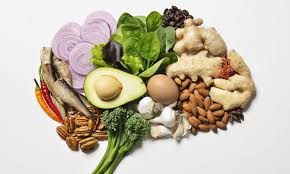
Just like every machine, the brain must be fueled with food which provides it with essential nutrients that help it function optimally. Such foods comprise of plant based foods, healthy fats (mostly Poly and mono unsaturated fats from fatty fish, olive oil, nuts, chicken, etc) and cutting back on solid fats such as lard and butter. While saturated fats slow down cognitive function, plant nutrients support memory retention and help to keep your blood pressure low as hypertension affects your brain and heart. The star plants include beans, green leafy vegetables, cruciferous vegetables, moderate red wine, legumes and poultry, among others. Basically, foods healthy for your heart would be great for your brain!
Slow down on the Alcohol:

Drinking too much does not only impair judgement and reaction short term, the National Institute of Alcohol Abuse and Alcoholism also reports brain shrinkage with long term alcohol abuse. Also because typical heavy drinkers have poor diets, brain healthy nutrients such as B-Vitamins (B12, B6, Thiamin and Niacin) are often deficient in alcohol abusers! Consume in moderation. The recommended daily allowance is no more than two drinks per day for men and one drink per day for women!
Load up on Omega 3s:
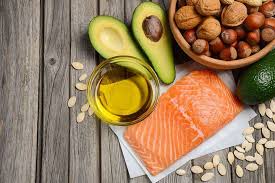
Your brain needs omega-3 fatty acids to function but your body can’t produce them, hence they must be gotten from the diet. Two 2017 brain studies from the University of Illinois suggests that eating omega 3 FAs may improve memory retention and strengthen the structures responsible for fluid intelligence (responsible for solving new problems). Also, researchers at Harvard University discovered that Omega-3 FAs May interfere with the brain signals that trigger the characteristic mood swings seen in Bipolar Disorder. These studies indicate that there are possibilities that O3FAs could be used to manage and treat psychiatric disorders such as depression and schizophrenia.
As a plus, Omega 3s significantly decrease triglyceride levels, blood pressure and reduces blood levels of homocysteine which are associated with an increased risk of stroke, Alzheimer’s disease among other brain problems.Foods rich in Omega 3 FAs include soybean, canola oils, cold-water fatty fish such as salmon, tuna and sardines, certified soy products, Nuts especially walnuts and legumes. You need more than one type of Omega 3 FAs, so it would be beneficial to eat a variety of these foods when you can.
Fight Free Radicals with Antioxidants:
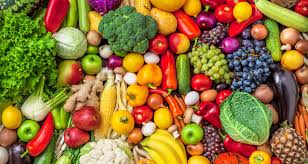
Your body produces unstable atoms, called free radicals in reaction to stress, trauma, pollution, processed foods and drugs etc. Although these unstable atoms have immune functions, too much of them can damage and and destroy normal healthy cells. Free radicals are responsible for many neurodegenerative conditions, including Alzheimer’s disease. To keep these in check, you’d need to keep them in check with antioxidants found in many vitamins and minerals naturally occurring in vegetables and fruits and many natural foods. Also, take steps to reduce environmental pollution from solvents, tobacco smoke, pesticides and exhaust fumes.
Some examples of Antioxidants include:
Vitamin E: Vitamin E has been shown to prevent free radicals damage and delay memory deficits in animal studies. In a two year study of people with Alzheimer’s, large doses of Vitamin E slowed progression of the disease. It has not been shown, however, that large doses of the vitamin can prevent Alzheimer’s in healthy people. Foods rich in Vitamin E include vegetable oils, nuts and seeds, wheat germ oil, peanut butter and green leafy vegetables.
Vitamin A: This is another great antioxidant vitamin! Asides from helping to protect the brain from harmful free radicals, it also benefits the circulatory system and is essential for memory and learning. Foods rich in vitamin A include beef liver, fish oil and fortified foods. Others ate carrots, kale, spinach, apricots, cantaloupe, broccoli and winter squash.
Have a Cup of Coffee:
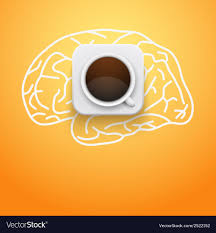
Coffee has taken a beaten over the years and for good reason too, owing to one word: Overindulgence.
It has been proven that coffee reduced the production of the neurotransmitter adenosine by binding to its receptors. Adenosine being a chemical that causes feeling of tiredness, is crucial at bedtime, but otherwise is just a nuisance. This is why a cup of coffee increases alertness and focus!
Coffee also keeps your brain from reabsorbing dopamine, the body’s feel good neurotransmitter, thereby keeping you happy for longer.
However, just like every good thing, there is a limit. Once you start going over 400 mg of caffeine in a day (about 4 cups), the downside starts to outweigh the upside. Effects include migraines, insomnia, restlessness and increased ruination (caffeine is a diuretic). Also, on an empty stomach it can cause heartburn.
So the cup of coffee in the morning is great for you but be careful not to overdo it.
Sip some green tea:
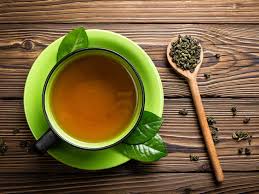
Green tea contains an amino acid called the anime which aids in increasing concentration and attention while reducing fatigue and stress. It also contains antioxidants and nutrients that are directly connected to increased cognition and brain performance. Green tea is a great source of polyphenols which improve memory and learning as well.
Carotenoid it up:
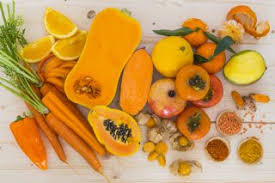
Your brain love loves carotenoids. Asides being a great antioxidant, are a precursor for retinol which is wonderful for your eyes. A good source of these is carrots, another is tomatoes. Cooking makes carotenoids in tomatoes bioavailable, meaning your body can absorb it much quicker than in the raw tomatoes. Since carotenoids are fat soluble, a little olive oil in the sauce would help your body absorb more of these do-good chemicals. Do not skin your tomatoes, you’d take out much of the good stuff.
Pump up on Iron:
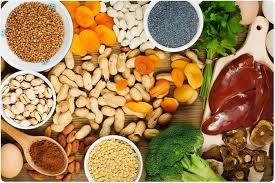
Iron has been found to help with cognitive functions. Children with iron deficiency tend to do worse in math, according to recent studies. Even minor levels of iron deficiency can negatively affect brain function. Iron is necessary for the production of myelin which is the insulating sheath around nerve cells, which help speed the rate at which cells convey impulses. Without appropriate myelination, the nervous system and the brain cannot function optimally. Great sources of iron include organ meats, dark chocolates, green vegetables, eggs, cereals and legumes.
Pile on the onions:
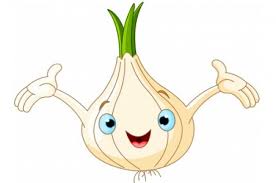
While onions are known to contain antioxidants that can remove free radicals, recent studies show that certain chemical compounds found in onions may protect the brain from stroke damage. They have polyphenols which are linked to improved cerebral blood flow and metabolism, and other flavonoids that helps protect the brain against toxins. Onions are also loaded with vitamin C, B6 and folate which help protect the brain.
Increase that Metabolism:

Everything the body does is dependent on your metabolism; from immune functions to digestion and cognition. According to a recent study by McGull University and University of Zurich researchers, metabolism in brain cells affect how information is signaled. Researchers concluded that this is why special diets can help some individuals with seizures control seizure episodes. Studies also show that maintaining a stable glucose concentration in the brain is healthier for the brain than having spikes, too high or too low levels.
To fast track your metabolism with diet and lifestyle,
1. Start off your day with breakfast to kickstart your metabolism;
2. Graze with small meals and snacks throughout the day to maintain stable metabolism and prevent spikes and valleys in blood glucose levels;
3. Eat enough, but not too much as both extremes damage your metabolism;
4. Sip a cup of coffee to help boost metabolism and
5. Engage in as much physical activity as you can.
Fiber:Asides from keeping you regular, Scientists in Great Britain found that for every 7 grams of fiber eaten per day, your risk of stroke goes down 7%!! So chow down on those fruits and vegetables, stack up on high residue cereals and grains and don’t forget to include soluble fibers from avocados, bananas, legumes and oatmeal.
Pack On the Protein:
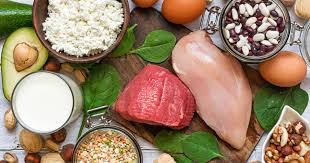
Protein supplies the amino acids your brain needs to product neurotransmitters and feel good hormones such as serotonin, dopamine and endorphins.
However, just like carbohydrates and fat, excess energy from proteins are stored as adiposity and is not very healthy, so go easy on them. Also, choose healthy protein sources such as lean meats as most animal protein sources are high in saturated fats and cholesterol. Be wary of fried meats and choose grilled, boiled and poached options. Great sources include eggs and other poultry, lean beef, legumes and grains.
Other Brain Essential Nutrients:
Vitamin B1: Asides being a potent antioxidant and functioning as a cofactor for carbohydrate metabolism, a serious deficiency in B1 can result in dementia, confusion and memory loss! Deficiency of this vitamin is prevalent among alcohol abusers. B1 is found in yeast, meat, nuts, beans and cereals.
Folic Acid: Folic Acid (Vit B9) helps your brain get the blood it needs by inhibiting the narrowing of arteries in the neck. More studies have surfaces, showing the correlation between folic acid supplementation and a reduced chance of certain age related neurodegenerative diseases such as dementia. Much like B12, folic acid deficiency may present with amnesia (forgetfulness). Folic acid is mostly found in fortified cereals, beans, green leafy vegetables and citrus fruits.
Vitamin B6: Just like other B-vitamins, B6 is great for cell function and energy metabolism. It is also great for circulation, which the brain needs for fuel. Vitamin B6, in conjunction with folate and B12 helps lower blood levels of homocysteine, a risk factor for heart disease. Great sources include rice, soybeans, whole grains, fish, chicken, carrots, beef, bananas and avocados.
Vitamin B12: An estimated 25% of people between ages 60 & 7O are deficient in B12, and so are nearly 40% of people eighty and older. B12 deficiency is easily mistaken for decline in mental function, including memory loss and reduction in reasoning skills, and may affect mood. B12 has shown great benefits in treatment of Alzheimer’s, dementia, sleep disorders and diabetic neuropathy. Sources include liver, salmon, cereals, yogurt and eggs.
Magnesium: Magnesium aids neuron metabolism and boosts the effectiveness of certain antioxidants. Higher magnesium intakes have also been linked to a lower risk of strokes. The best sources of magnesium include legumes, almonds, avocados, wheat bran, seafood, fruit, whole grains and green vegetables.
Vitamin C: Vit C is another powerful antioxidant. A daily dose of 1,000-2,000 mg (mostly from food) has been shown to keep the arteries healthy while an extra 500 mg may lower blood pressure. Sources include dark green leafy vegetables, kiwi, oranges, mango, tomatoes, and citrus fruits. Be careful not to take too much as large amounts have been shown to cause diarrhea and kidney stones.
Phosphorus: phosphorus is vital to growth, maintainable and repair of all body tissues, including the brain. It also helps activate B a Iranians and is a component of the storage form of energy in the brain. Phosphorus is found in potatoes, wheat, fish, meat, eggs, nuts and seeds.
Get that Exercise:
Did you know that exercising has been shown to help combat major depression? 😂 thank me later then.
Exercise releases endorphins, which are your body’s feel good chemicals that help your nerve cells send signals. They not only elevate your mood but also help protect you from feeling pain. Exercising is a great way of increasing blood concentrations of these wonderful chemicals.
Also, spicy foods which contain capsaicin (causing them burning sensation) can also prompt your brain to release endorphins.
Other great foods for your brain include oolong tea, quality dark chocolates, ginkgo, avocados, berries and wild oats!!
Get in the business of taking care of your mind and brain, theres only one of it!
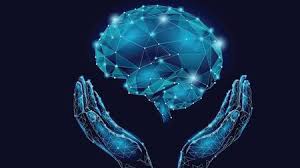
Irritable bowel syndrome is a disorder of the large intestine that causes abdominal pain, excess wind, diarrhoea, mucus in stool, constipation and irregular bowel habits to the individual. Well, the cause is really not know, but once you see these symptoms, then you might just have IBS. It could aslo be called ‘spastic colitis, mucuous colitis or nervous colon. IBS is chronic and long term, so you might just have to live with it and manage it for a long period of time😢😟.
FACTS ABOUT IBS
🍅 it wont lead to cancer.
🍆 Though it causes discomfort, it doesnt really lead to severe or serious complications.
🌽 reduced alcohol intake can help in managing IBS
🍍excluding foods that can cause gas e.g onions, cucumber e.t.c can help reduce symptoms
🍞 dietary and emotional factors play major roles in IBS😁.
🍒 No cure yet, but it can be managed effieciently.
Most times, signs and symptoms vary among individuals and they tend to resemble signs in other disease conditions. Examples are :
1. Polyuria (frequent urination)
2. Halitosis or bad breathe
3. Joint pains
4. Pain with sex for females or sexual dysfunction
5. Irregular menses.
CAUSES? 🤔🤔🤔
Eerrmm, it is not really know what could lead to this gastrointestinal discomfort, but some factors that could be implicared are:
🌽Diet.
🍆Environmental factors, such as stress.
🌷Genetic factors.
🍋Hormones.
🍅Digestive organs being excessively sensitive to pain.
🍌A malfunction in the muscles used to move food through the body.
🍞An inability of the central nervous system (CNS) to control the digestive system properly.
🍓Hormonal changes can make symptoms worse especially for women during their menstrual cycle.
🌰Infections, such as gastroenteritis, can trigger post-infectious IBS also, just to mention but a few.
MEDICATION:
The following medications are basically used for IBS symptoms:
🍉Antispasmodic medications reduce abdominal cramping and pain by relaxing the muscles in the gut.
🍋Antimotility medications for diarrhea include loperamide, which slows down the contractions of the intestinal muscles.
🥕Tricyclic antidepressant (TCAs) often help to reduce abdominal pain and cramping.
🍒Alosetron (Lotronex) for severe diarrhea-predominant IBS in women also works well.
DIET AND TREATMENT:
Following a low FODMAP diet would be a good dietary approach to managing IBS. FODMAP is an acronym that connotes : Fermentable Oligosaccharides, Disaccharides, Monosaccharides, And polyols.
They include short chain oligo-saccharide polymers of fructose (fructans) and galactooligosaccharides (stachyose, raffinose), disaccharides (lactose), monosaccharides (fructose), and sugar alcohols (polyols), such as sorbitol, mannitol, xylitol and maltitol. Examples of foods to avoid and foods to add to your diet are:
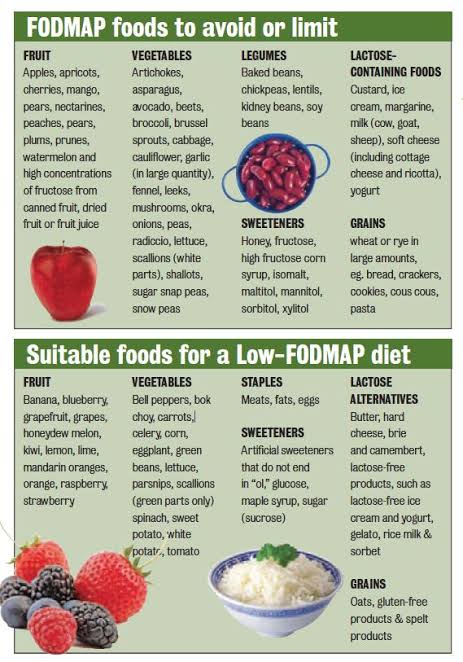
DIAGNOSIS:
Majorly, symptoms are used to diagnose the type of IBS present in an individual.
1.IBS-C : IBS with just constipation.
2.IBS- D: IBS with diarrhoea
3. IBS-A : IBS with alternating stool pattern.
RISK FACTORS:
The major factors to be considered are
1. Gender: it affects majorly women
2. Younger adults; people below ages 40, mostly from 20-30.
3. Environment
4. Family history: if a relative had IBS, you might be likely to have it too.
Be really mindful of your diet and stress levels to reduce episodes😁😊.

Unarguably, salt is one important seasoning that you can almost not overlook during cooking. Meals will have appaling taste without them😣😣.
Salts are actually crystalline substances made of sodium (Na) and chlorine (cl). Sodium and chloride actually help the brain nerves send electric impulses.
Another important factor about salt is that its sodium helps in retaining fluid around interstitial tissues, and when its in excess, it causes an increase in blood pressure.
There are a number of salts which are:himalayan pink salt(pretty face😋), hosher salt, celtic salt e.t.c and all contains sodium in negligibly relative amounts.
Apparently, people tend to prefer the ‘pink himalayas’ salt to the normal white salt. Maybe because of the pretty colour?
Well, i would’nt know though😁, but lets take a journey together shall we?🏃♂️
Pink salt gets it colour from trace amounts of iron oxide (rust) because it is gotten from mines; it also contains a number of trace elements as calcium, berrylium, potassium e.t.c and contains 1700mg of sodiun per teaspoon in comparison to white salt which has 2300mg. Dont be too excited yet…
Lets analyse some things👉👉 the volume of salt that can fit into the measuring spoon determines the amount of crystals that will fit into your teaspoon. Pink salt tends to have smaller crystals than white table salt so it takes smaller volume per teaspoon and tends to have ‘reduced’ sodium content.
No matter the colour and finesse of the salt, the sodium content is still to be considered and the amount to be used per day should be considered too.
Basic facts about salt:
🥖 contains virtually no calories but excessive intake could lead to weight gain due to its ability to retain fluid.
🍓 iodized salt is the easiest way to get iodine which keeps you away from hyperthyroidism and goitre.
🥔In a day, you are to use just 2.3mg of salt which is approximately 1 teaspoon. For older adults, its reduced to 1.5mg per day.

Please kindly stop adding salt till your ancestral people whispers in your ears ‘ its okay now my child’ 🤧🤧.
NUTRITION AND CANCER
Cancer is simply termed ‘growth of unhealthy tissues (malignant) which results from abnormal or uncontrolled cell division.
Cancer occurs in all parts of the human body and has the ability to spread across (metastasize) to another region in the body.
Carcinogens are possible factors that when exposed to, can cause or promote cancer. There are both environmental and dietary factors that could be carcinogenic in nature.
Exposure to certain factors like radiation, sunlight, toxic substances from creams , and smoking could lead to cancer.
DIETARY FACTORS THAT COULD LEAD TO OBESITY
1. Abuse of alcohol could lead to mouth, throat and liver cancer.🍺🍻
2. High intakes of smoke or salt preserved foods, refined flour or starch, and processed meat🍗 could lead to stomach cancer.
3. High intake of saturated fats, red meat, and supplemental iron with reduced intake of fibre could lead to colorectal cancer. 🍖
4. Folate deficiency and low intake of dark green leafy vegetables could lead to cervical cancer.
Fruits and vegetables don’t have the ability to cure cancer but adequate consumption of them could help prevent the development of cancer. For example, the cruciferous vegetables – cabbage, cauliflower, broccoli contain phytochemical that could be beneficial in defending against colon cancer.
Maintaining a healthy body weight could also help to reduce risks of cancer in both genders👬. Obese postmenopausal women are at the risk of developing breast cancer because fat tissues produces oestrogen and extended exposure of this oestrogen in obese postmenopausal women is linked to an increased risk of developing breast cancer.
DIETARY RECOMMENDATIONS FOR REDUCING CANCER RISKS
1. Maintain a healthy body weight by eating small portions of foods, balancing energy intake with physical activities and choosing healthy fats
2. Eat at least 5 servings of fruits and vegetables daily.
3. Choose lean meats, fish and poultry as alternatives to pork and processed meats as hot dogs and sausages.
4. If you must take alcohol, limit it to 2 drinks per day.
5. Choose whole grains like oats, whole wheat bread instead of pastries and breakfast cereals.
The craze to lose weight now is really becoming a social menace and a means to distort money from people. Everyone seems to be a weight loss expert because they tried one funny way and it worked out well for them which might be risky to your health.
Lets take a little journey on gallstones shall we?
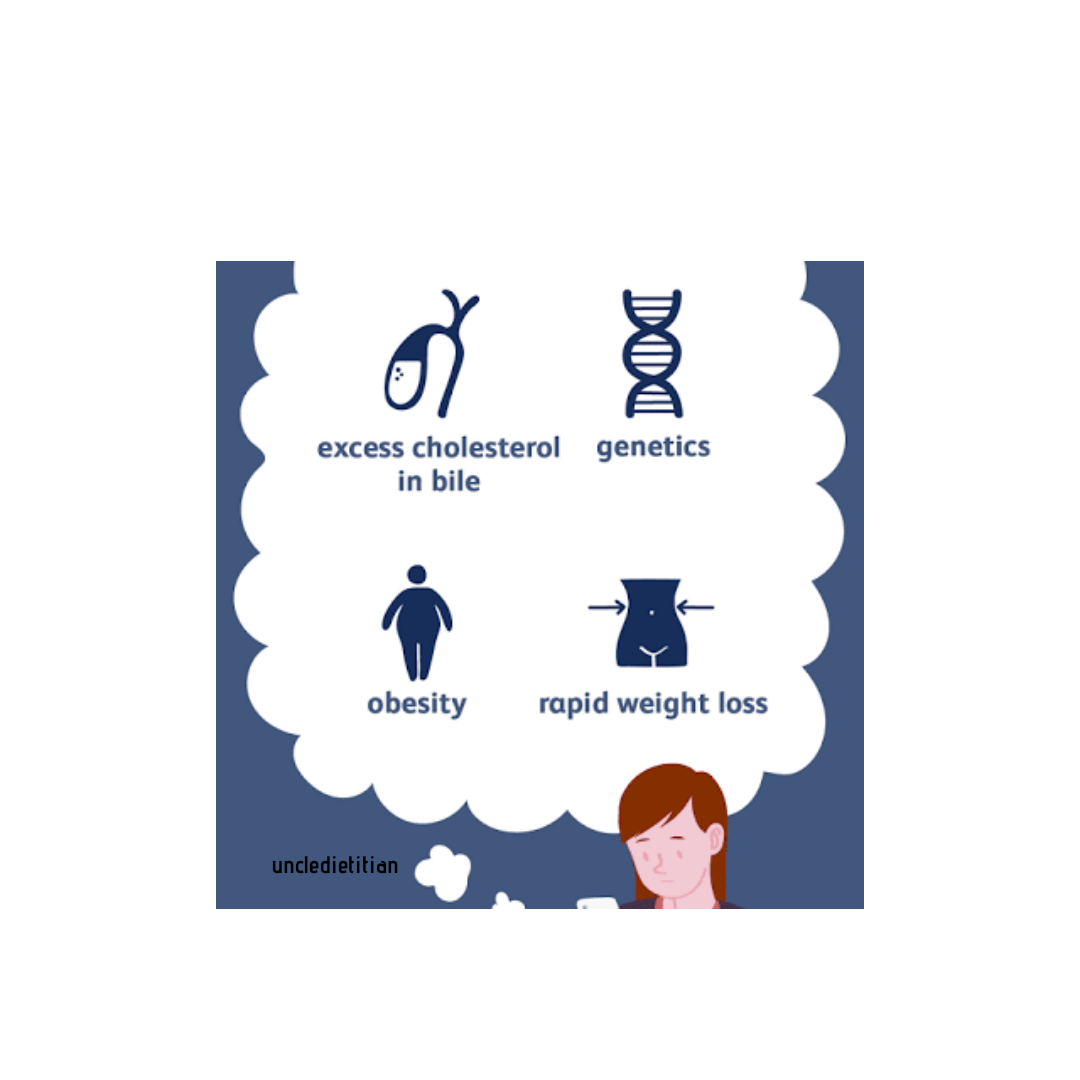 Gallstones are not stones per se 😁, but are pieces of solid materials that form in the gall bladder, a small organ located under the liver. This stones tend to block the bile duct supplying bile. Bile is produced by animals to help digest fats. You know that blackish green stuff? When it bursts in chicken, it spoils the taste? Thats bile. When there is lot of cholesterol in Bile, lots of calcium, it could lead to production of these gallstones which would need immediate treatment or surgery. Major problems that could lead to gallstones?
Gallstones are not stones per se 😁, but are pieces of solid materials that form in the gall bladder, a small organ located under the liver. This stones tend to block the bile duct supplying bile. Bile is produced by animals to help digest fats. You know that blackish green stuff? When it bursts in chicken, it spoils the taste? Thats bile. When there is lot of cholesterol in Bile, lots of calcium, it could lead to production of these gallstones which would need immediate treatment or surgery. Major problems that could lead to gallstones?
🍏Obesity: your body tends to produce more cholesterol when you are heavily endowed😁.
🍑Rapid weight loss: all of you doing ‘lose 20kg in 2weeks, while doing this, your livers are at high risk of producing extra cholesterol during that period.
🍹Too much intake of birth control pills which tend to boost production of cholesterol.
🌶 too much fasting: uncle/aunty intermittent fasting. During this period, your gall bladder doesnt squeeze effectively as they should. You are at risk too. Please be mindful of the junks you pick off the internet😁.
Beauty they say is in the eye of the beholder. The main crux will be what will be the yard stick to define something as beautiful and as the entire opposite. A big question I must say and it becomes me to answer. Kindly hit the brakes and allow me a soft landing by enjoying this piece. It is always an uphill task writing about sizes of humans because no one takes it likely when you touch their self esteem at wrong spots which may deflate their ego. We are all beautiful in our ways. The world is blessed with the short, tall, skinny, or plus size. No matter what dice life throws at you or what ever faculty you find yourself, remember you are your beautiful. As long as it does not in any way affect your health status then rock your style with a bounce under your feet. The BMI is (Dietitian define)… Talk about the balance of how your size must align with your height. If you fall into the class of unhealthy BMI ( >27kgm sq.), then it is advised you shed some weight. If you must do so, do it beautiful… Misconceptions about weight loss
1. DETOX TEA HELPS TO LOSE WEIGHT The whole idea of DETOX is actually very funny. The body has a well developed system that has its own built-in mechanism to detoxify and remove waste and toxins. The body’s main organs of detoxification are the kidney, skin, lungs and gut. Our body constantly filters out, breaks down and excretes toxins and wasted products like alcohol, medications, products of digestion, dead cells, chemicals from pollution and bacteria.
2. YOU CAN LOSE 5KG IN ONE WEEK: You didn’t gain that fat in one day, so it’s not healthy if you go so drastic in losing it. Ideally, you should lose 0.5kg -1kg per week. You can achieve this by a deficit of 3,500 kilocalories per week from your diet.
3. INTERMITTENT FASTING: When you fast, you tend to reduce rapidly due to the heavy restriction on intake of energy (calories). But this weight loss is largely water and glycogen (body’s carbohydrate stores), rather than fat. You tend to feel dizzy and fatigue during this fast, thereby leaving no energy for physical exercise.
4. KETOGENIC DIET: By doing this, you by pass the normal metabolic pathway thereby neglecting the body’s normal sources of energy (carbohydrates) and breaking down fats which leads to build up ketones (ketosis). Prolonged build up of this ketones leads to ketoacidosis which causes serious havoc for your internal organs. Ketogenesis is use on epileptic patients because they have more synaptic responses in their brains than normal humans. These responses are triggered by glucose, which is removed totally from the diet. The patient is closely monitored by a medical team.
5. Green tea would help you lose weight: 🤣😅. The major ingredients in most slimming tea is ‘senna’;a very strong laxative. Senna contains glycosides that stimulates digestive system. So how would you be stooling frequently and not lose weight? Healthy choice?🙄🙄.
There are lots more, but these aforementioned are more common in our society today.
*Your weight loss journey is not a death sentence, it rather should be enjoyed and should become a lifestyle.
*Weight loss regimes should not be rigid or full of restrictions.
*Take a new habit slowly, set goals for yourself.
* Get yourself a food diary and record your consumption and level of satiety per portion.
* Exercise is very important in weight loss regimens.
As you may have heard, the body builds its muscle from amino acid (they are known as building blocks) . However, some athletes believe that when they consume protein supplement (such as casein or whey protein), their bodies build more muscles. This is untrue. Working those muscles is what builds them! Getting adequate protein for protein synthesis in the body is very important but taking too much of it does not make the muscles grow any bigger or faster. This is especially true when the muscles are not exercised adequately and regularly. As you might have heard, “use it or loose it, pal”.
Let me breakdown what happens when too much protein is being ingested.

The body uses the surplus to replace normal daily loss from growth, healing and other anabolic activities. Any excess protein available is either stored as fat or excreted in the urine as either urinary nitrogen or creatinine. Available research has also revealed that an excessive intake of these protein supplements could stress the livers and kidneys (the organs responsible for protein synthesis).
However, we dietitians recommend getting required amino acids such as arginine and glutamine from your diet. Foods that are rich in these amino acids include milk, nuts, eggs, chicken, lean beef and pork and turkey. This would ensure that you consume them alongside other important nutrients.

Therefore a person can grow fat by eating too much protein and not muscles. Exercising your muscles make them bigger. Stop gulping protein supplements if you are not going to work those things!




